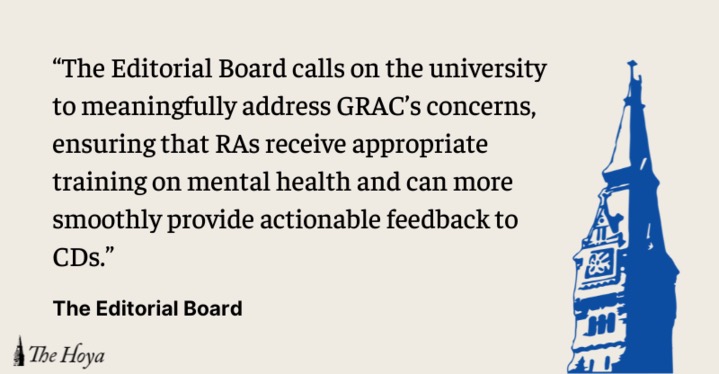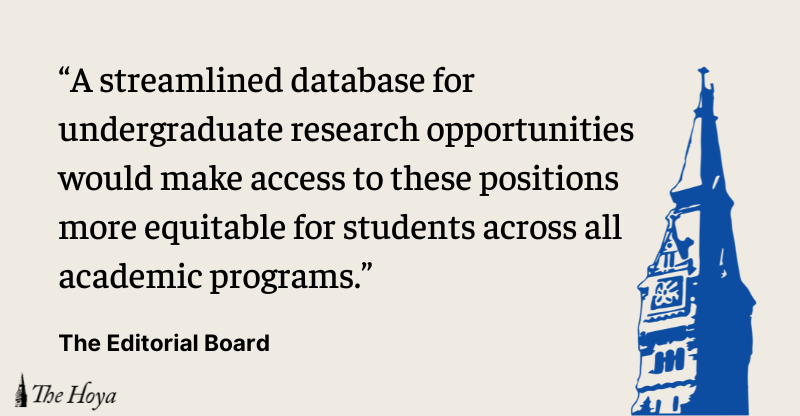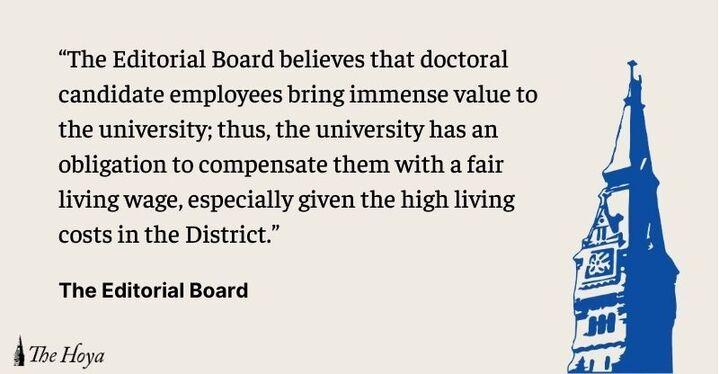A superficial and uninspired execution of the diversity requirement has failed to provide the majority of Georgetown University students with perspectives that reach beyond their own.
The diversity requirement, implemented in 2016, was meant to prepare Georgetown students to engage with different traditions and become global citizens.
Despite this lofty goal, the university’s application of the requirement falls short in pushing students to reflect and apply lessons learned to their entire educations.
To ensure students expand their worldviews and benefit from the requirement, Georgetown should foster a more meaningful and intentional diversity requirement. The university could execute an effective requirement by mandating that professors explain how their course fulfills the requirement. Furthermore, students should be required to submit a reflection to the dean’s office on how the course achieved the goals of the mandate.
Georgetown implemented a diversity requirement in 2016 after student activism on the issue dating back to 1991. Under the current requirement, students must take two courses that engage with ethnic, cultural and religious diversity, one in a domestic context and the other global.
Though Georgetown deserves some credit for attempting to respond to student activism, the current diversity requirement falls short of the reflective, conscious approach to education that students deserve.
To truly cultivate global citizens, Georgetown should effectively execute its diversity requirement by first ensuring all courses that meet the mandate actually present differing ideas and traditions.
Currently, some classes that can fulfill the requirement fail to provide students with diverse perspectives. For example, an “Introduction to Early European History” course fulfills the global diversity requirement, despite recycling the same ideas and beliefs that students are exposed to in other classes. Courses that count for the requirement should provide the majority of students with perspectives beyond their own.
Moreover, the current system can lead to students taking courses that count towards the requirement without realizing it. In many cases, students take a class to fill another requirement — the humanities, art, language and culture credit, for example — without realizing they are fulfilling their diversity requirement as well. This lack of intentionality often means students are not deliberately engaging with their academic work.
By explaining how courses fulfill the requirement, professors could push students to consciously approach the course’s diversity component.
Though professors have a deep understanding of how their course engages with diversity — they must petition for a course to count toward the requirement — these reasons are not always clear to students. To ensure students are deliberately interacting with the requirement, professors should be clear on syllabi and in class about how their course engages diversity.
Moreover, current requirement guidelines mean that students can fulfill the mandate without reflecting on the experience; beyond absorbing course material and discussions, no structured reflection is required, perpetuating a dull and thoughtless requirement.
In addition to professors, students must bear some responsibility in seeking meaning in the requirement. Georgetown should require students to submit a written or oral reflection focused on the diversity component’s impact on their academic careers for the class to count. Such a reflection — submitted to the curricular dean for approval — would encourage students to actively engage throughout the course and consciously approach their other classes.
Though a stringent diversity requirement — one that would not allow for course overlap — could also ensure deliberate student engagement, the core curriculum is already difficult to complete. Rather than increasing student burdens, the university should simply improve the current requirement and ensure it is intentional and worthwhile.
To improve the diversity requirement, Georgetown should mandate structured student reflection and require professors to be clearer in explaining how courses fulfill the requirement. Both of these changes would expand student engagement with diversity beyond just two mandatory courses.
At Georgetown, the diversity requirement is little more than a box for students to check before graduating. To genuinely prepare students as global leaders, the university must refine its requirement and push students to consciously grapple with worldviews different from their own.
The Hoya’s editorial board is composed of six students and chaired by the opinion editor. Editorials reflect only the beliefs of a majority of the board and are not representative of The Hoya or any individual member of the board.













